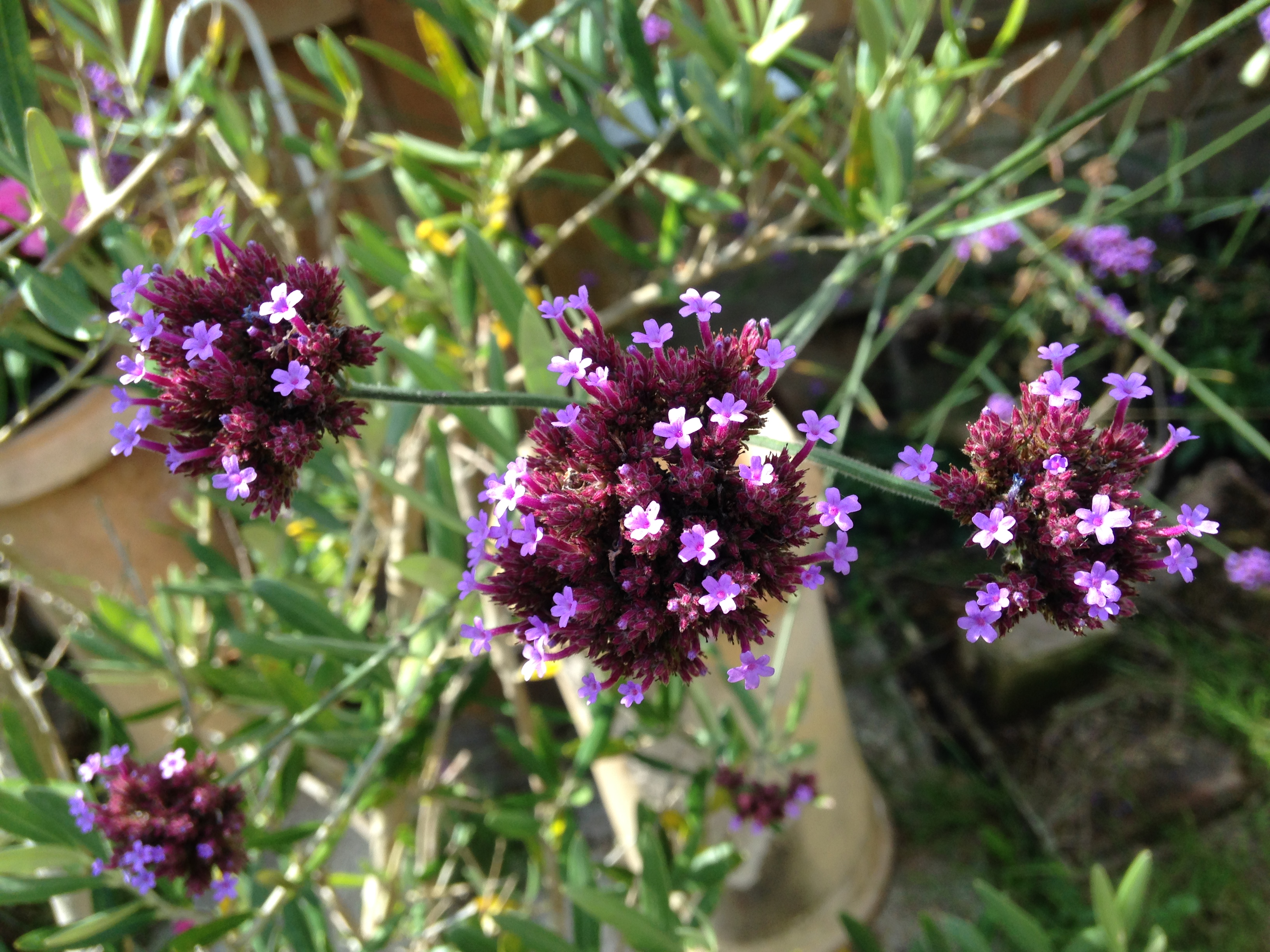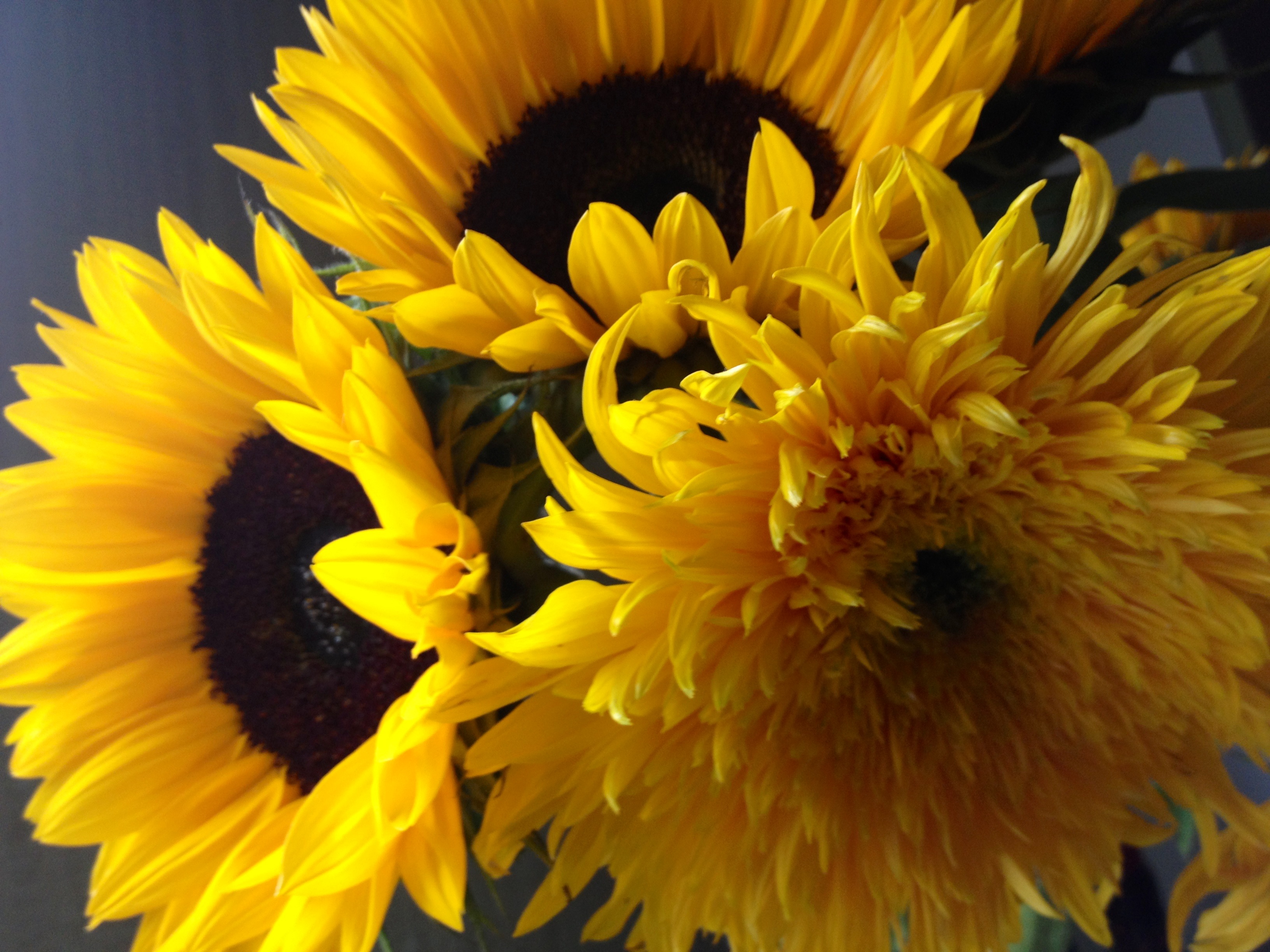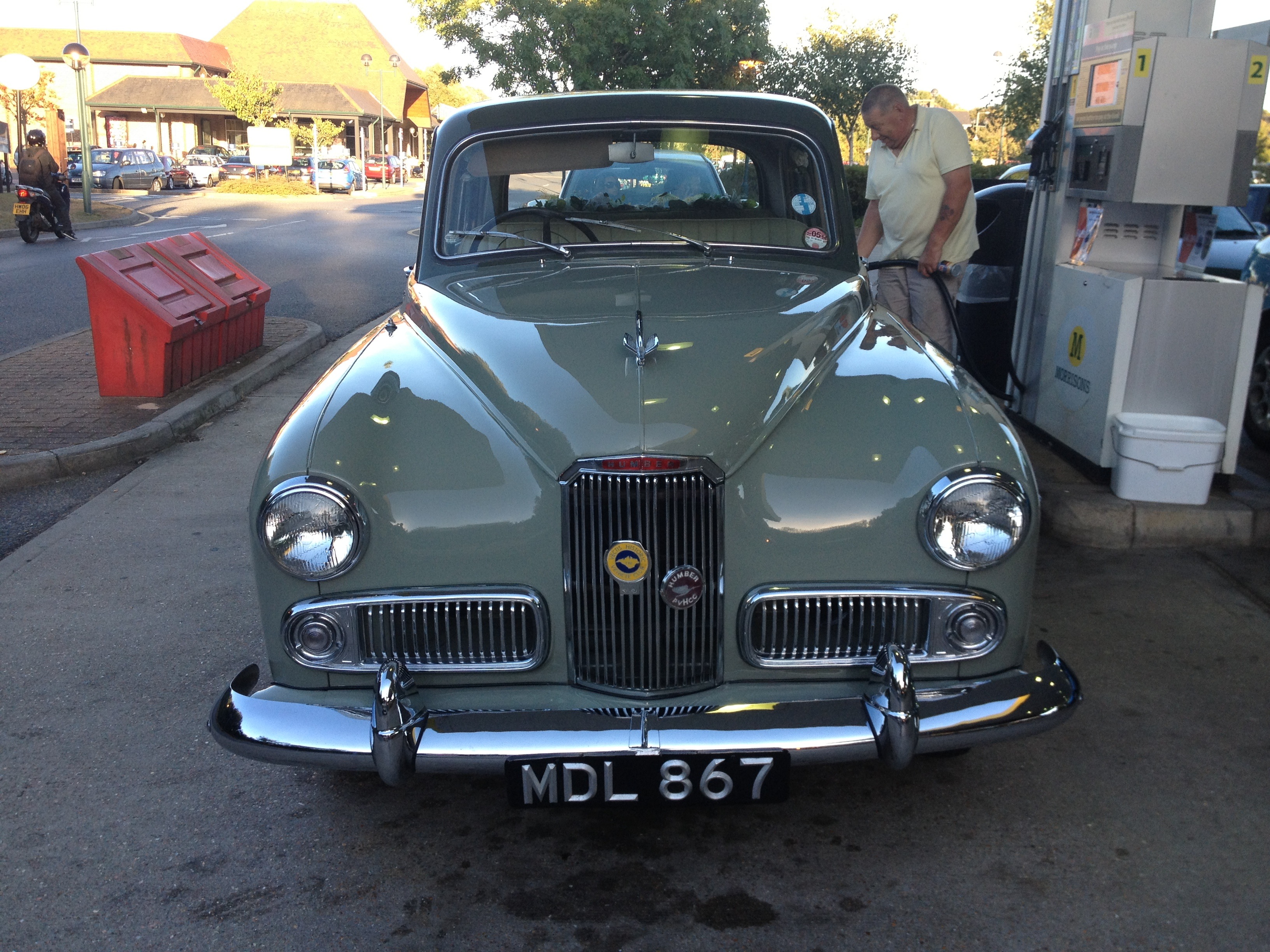This image of the sun bursting through clouds was taken from Brighton Racecourse. The street light gives the impression that it is illuminating the whole of Brighton. Awesome!
The iPhone isn't really up to a lot of zoom and the image becomes quite grainy, quite quickly, in proportion to the amount of zoom you use, and most of the foreground was in dark shadow. As far as I know the iPhone is 'aperture priority' in that it adjusts the exposure by increasing the shutter speed and always uses the same f stop number 2.4 and the lowest ISO possible, which is somewhere between 50 and 800 (with the 4S model) and 3200 with the iPhone 5, so there isn't much scope for landscapes where you want depth of field and sharp focusing across the image by using a bigger f stop number (smaller aperture).
However, if you are out and about and you see an awesome sunset - and an iPhone is all you have handy - you can still take some pretty impressive shots with the 8mp front camera. This image was enhanced using the Adobe Photoshop Express App for iPhone, which is a bit basic, but OK for a phone app if you just want to make quick adjustments to things like contrast and brightness.
Another trick I discovered with iPhone (and most digital cameras) is that if you take the photograph in low light but turn the flash off, because the iPhone is auto-everything, it compensates for the low light by decreasing the shutter speed and increasing the ISO. The result is the picture is brighter and more vivid than it would have been in bright light or with the flash on.
You can also adjust exposure on the iPhone by tapping the screen before you take the photograph. Tapping the screen selects the point you want to focus on and also exposes the image for that area, so the exposure can be adjusted somewhat by tapping lighter or darker areas of the image. If one thing can be said about the iPhone camera, it is that it is versatile across a broad spectrum of lighting conditions.
See the images below for more photography taken with the iPhone (click the images to enlarge). To view all iPhone photographs in this set click here.



























